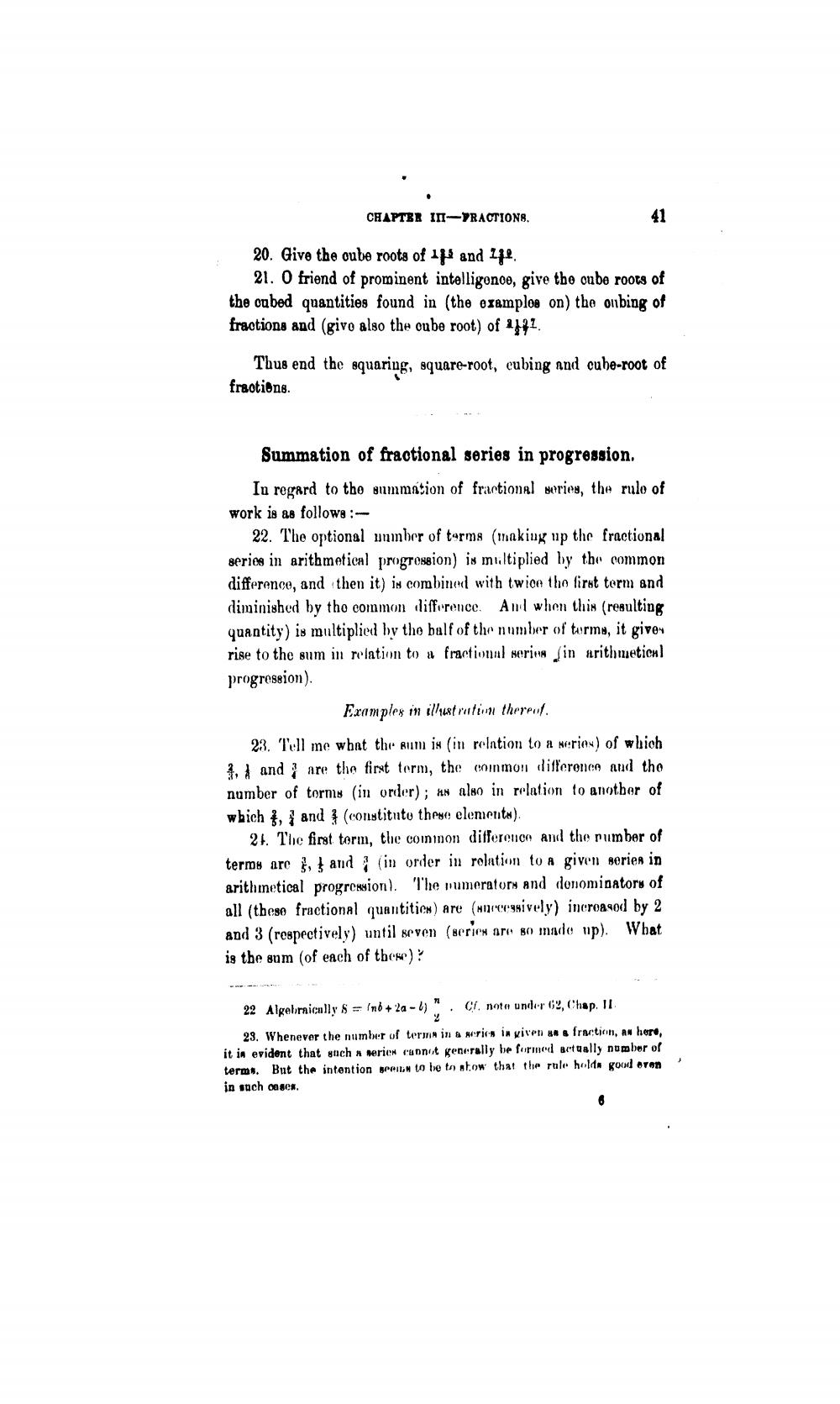________________
CHAPTER III-YRACTIONS,
20. Give the oube roots of 1 and 24.
21. O friend of prominent intelligonoo, give the oube roots of the cubed quantities found in (the examplog on) the obing of fractions and (givo also the cube root) of 2172.
Thus end the squaring, square-root, cubing and cube-root of fractions.
Summation of fractional series in progression.
In regard to the summation of fractional series, the rule of work is as follows:
22. The optional umber of terms making up the fractional series in arithmetical progression) is multiplied by the common difference, and then it) in combined with twice the first term and diminished by the common difference. And when this resulting quantity) is multiplied by the half of the number of turmy, it gives rise to the sum in relation to a fractional serinn sin arithmetical progression).
Examples in illustration thereuf. 23. Tell me what the sun is (in reIntion to a series) of which 3. . and are the first term, the common difference and the number of torms (in order); is also in relation to another of which }, { and ] (constitnto these elements)
21. The first torm, the common difference and the number of terms are , and (in order in relation to a given series in arithmetical progression). The numerators and donominators of all (these fractional quantities) are (noncessively) increasod by 2 and 3 (respectively) until seven (series are so made up). What is the sum (of each of thes)?
22 Algebrnicnly $ = in6 + 2a-6)". Ci nota under o2, Chap. 11
23. Whenever the number of termin a win in viven ** fruction, a hero, it in evident that such nerics cannot generally be formed actually number of terms. But the intention peil to be to show that the rule holda good ovon in such coses.




